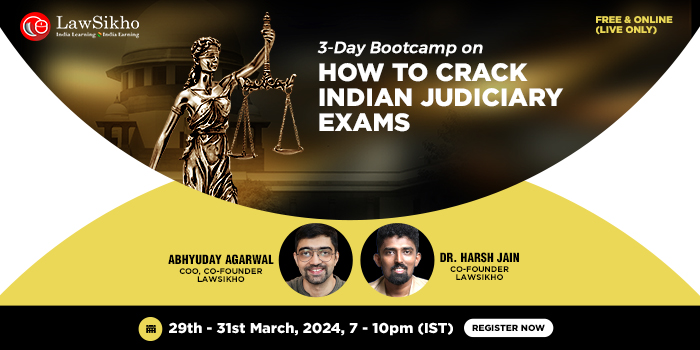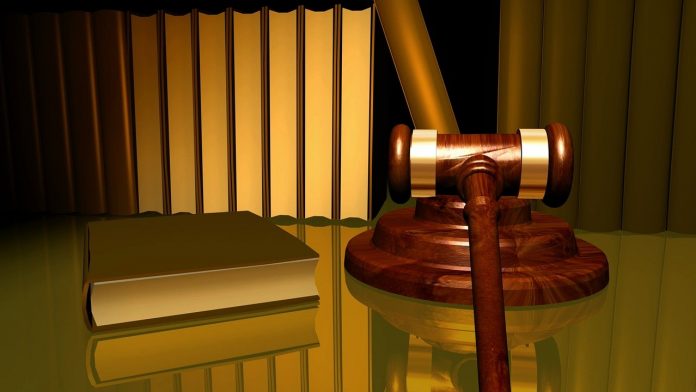This report has been composed by Rohini pursuing a Diploma in M&A, Institutional Finance and Investment decision Legal guidelines (PE and VC transactions) study course from LawSikho.
This posting has been edited and posted by Shashwat Kaushik.
The concern of the appointment of Supreme Court and Large Court docket Judges has develop into the matter of debate currently. In the yr 1993, the Collegium Technique arrived into existence as a consequence of a petition submitted by the Supreme Courtroom Advocates on File Affiliation (SCARA). This situation has emphasised Post 50 of the Indian Constitution, which talks about the independence of the judiciary. It is pertinent to mention that this case not only overruled the Supreme Court’s verdict in the S.P.Gupta Circumstance or To start with Judges Situation, but also held the supremacy of the Chief Justice of India (CJI), binding the President to check with the CJI in the appointment of judges.

Because of to the absence of transparency in the collegium system, the have to have to establish a transparent and accountable fee was strongly felt. This even further gave increase to the Nationwide Judicial Appointments Commission Invoice, 2014, which was introduced in the Lok Sabha on August 11, 2014, by the then Minister of Regulation and Justice, Mr. Ravi Shankar Prasad, with the intent to substitute the latest Collegium Procedure. The 99th Constitutional Amendment Act of 2014 paved the way for the establishment of the Countrywide Judicial Appointment Fee (NJAC).
Therefore, this posting offers an overview of the NJAC vis the collegium method in India.
The collegium system is a system of appointing judges in India. It is a method in which the Chief Justice of India and four other senior judges of the Supreme Court of India suggest candidates for judicial appointments to the President of India. The president then appoints the judges primarily based on these suggestions.
The collegium program was introduced in 1993, pursuing a conclusion of the Supreme Courtroom in the situation of S.P. Gupta vs. Union of India. This conclusion held that the Chief Justice of India and his four senior colleagues must have a say in the appointment of judges in purchase to guarantee the independence of the judiciary.
The collegium system has been criticized by some for becoming opaque and lacking transparency. Even so, it has also been praised for its position in safeguarding the independence of the judiciary.
Right here are some of the key capabilities of the collegium method:
- The Main Justice of India and his 4 senior colleagues constitute the collegium.
- The collegium recommends candidates for judicial appointments to the President of India.
- The President appoints the judges based on these tips.
- The collegium is not certain by any set criteria in creating its tips.
- The collegium’s decisions are final and are unable to be challenged in courtroom.
The collegium system has been amended a number of occasions given that its introduction in 1993. The most latest modification was built in 2015, which gave the governing administration a say in the appointment of judges. This modification has been controversial, and its constitutionality is staying challenged in court docket.

The collegium system is an critical element of the Indian judicial method. It plays a very important function in ensuring the independence of the judiciary and the high quality of judicial appointments.
As much as the collegium technique is concerned, it can be comprehended as a forum that is made up of the Chief Justice of India and four other senior judges of the Supreme Court. This collegium decides the appointment and transfer of the judges by creating a file of views on the appointment of the encouraged man or woman. This suggestion is sent to the Legislation Minister, who further more sends it to the Prime Minister in purchase to advise the President of India. In the case of the High Courtroom Judges, the recommendation of the Collegium is sent to the Main Minister, who even more sends it to the Governor, in the long run reaching the Union Law Minister.
The phrase “collegium” is nowhere defined in the Structure of India it has progressed more than time. In purchase to comprehend the Collegium System, it is vital to master about subsequent 3 instances
This case identified the purpose of the government in the appointment of judges in the bigger judiciary. The Supreme Court docket denied the point that the expression “consultation,” as for each Report 124 of the Indian Structure, meant “concurrence.”. Justice P.N. Bhagwati in this scenario recommended a collegium system with a broader point of view that would involve a wider variety of pursuits for the appointment of judges. On the other hand, the Collegium, as contemplated by Justice P.N. Bhagwati, was neglected, and the Collegium was confined only to the Judges of the Top-quality Court docket, therefore resulting in “Judges appointing Judges.”. For that reason, this case laid the basis for the formation of a collegium process and even further gave rise to the subsequent instances.
Supreme Courtroom Advocates-on-History Affiliation vs. Union of India (1993) – (2nd Judges Situation)
This circumstance has performed a considerable role in the emergence of the collegium method in India. The Supreme Court overruled its verdict passed in the S.P. Gupta Circumstance and held that the term “consultation” in Posting 124 of the Structure of India, now meant “concurrence.”. Giving supremacy to the CJI, this circumstance gave increase to the Collegium Program.
Re : Special Reference 1 of 1998 (1998) (3rd Judges Scenario)
This situation reaffirmed the verdict passed in the 2nd Judges Situation, hence binding the President on the suggestions created by the collegium. Now, the situation was concerning the which means of the expression “consultation.” Does the CJI’s sole viewpoint qualify as “consultation” U/Article 124, 217, and 222 of the Structure? KR Narayanan, the then President of India, issued a Presidential Reference to the Supreme Court docket in 1998, questioning the definition of the time period “consultation” below Content 124, 217, and 222 of the Constitution. This led to the composition of the collegium process, which would consist of the Main Justice of India and 4 senior-most judges of the Supreme Court docket.
These landmark circumstances played a sizeable role in shaping the process of judicial appointments in India. These circumstances not only set up the supremacy and independence of the judiciary but also fashioned a collegium system, which serves as a fundamental system for appointing judges to the better judiciary in India.
The Countrywide Judicial Appointments Commission Invoice, 2014, launched by the then Minister of Legislation and Justice, Ravi Shankar Prasad, was passed in Parliament, which proposed the NJAC as a substitution for the current Collegium Program. It was meant to insert Report 124A to the Constitution The Collegium Technique been given a whole lot of criticism for being ambiguous and opaque. Hence, NJAC was established by the 99th Constitutional Amendment Act, 2014.
The National Judicial Appointments Commission (NJAC) was a proposed constitutional human body in India that would have been dependable for the appointment and transfer of judges to the Supreme Court of India and the high courts of the states. It was envisaged as a alternative for the existing collegium procedure, which is composed of the Main Justice of India and 4 senior-most judges of the Supreme Courtroom.
The NJAC was proposed in the National Judicial Appointments Commission Invoice, 2014, which was introduced in the Lok Sabha, the lessen house of the Indian Parliament, on August 13, 2014. The invoice was passed by the Lok Sabha on December 13, 2014, but it was not handed by the Rajya Sabha, the higher dwelling of Parliament, right before the finish of the 16th Lok Sabha.
The NJAC was envisaged to have a overall of six associates:
- The Main Justice of India (Chairperson)
- Two senior-most judges of the Supreme Court
- The Legislation Minister
- Two eminent people, who would be selected by a range committee consisting of the Key Minister, the Main Justice of India, and the Chief of Opposition in the Lok Sabha.
The NJAC would have been responsible for recommending the appointment of judges to the Supreme Courtroom and the significant courts, as well as for transferring judges from a person substantial court to another. It would also have been liable for thinking about grievances versus judges and recommending their elimination from place of work, if necessary.
The NJAC was controversial from the commencing. Critics argued that it would undermine the independence of the judiciary, as it would give the federal government way too a lot impact more than the appointment of judges. Supporters of the NJAC argued that it would make the process of judicial appointments far more transparent and accountable, and that it would help to boost the quality of the judiciary.
The NJAC was ultimately struck down by the Supreme Courtroom of India in October 2015, which dominated that it was unconstitutional. The court docket held that the NJAC violated the essential framework of the Structure by undermining the independence of the judiciary.
Violation of judicial independence
A person of the main causes for the Court’s determination was that the NJAC would have undermined the independence of the judiciary. The collegium system, which is composed of senior judges, has been in put for a long time and has been credited with sustaining the independence of the judiciary. The NJAC, on the other hand, would have introduced in political interference in the appointment of judges, as it involved users from the govt and the legislature. This would have compromised the impartiality and objectivity of the judiciary.
Absence of adequate safeguards
The Courtroom also held that the NJAC lacked suitable safeguards to protect against political affect and guarantee transparency in the appointment course of action. The NJAC’s composition was intensely tilted in favour of the federal government, with the Main Justice of India staying the only agent from the judiciary. This imbalance would have specified the governing administration undue influence about judicial appointments. Moreover, the NJAC did not have any mechanism to deal with grievances of bias or misconduct in the appointment course of action.
Deficiency of transparency and accountability
An additional main issue lifted by the Court docket was the lack of transparency and accountability in the NJAC. The collegium process, even though not perfect, has a effectively-proven process for the appointment of judges. The NJAC, on the other hand, did not have any crystal clear conditions or methods for the selection of judges. This deficiency of transparency would have created it difficult to hold the NJAC accountable for its decisions.
The introduction of NJAC was completed with a see to bringing transparency and plurality to the system of appointing judges, which was lacking in the Collegium Method. In this article, with regards to NJAC, the approach was a immediate recommendation. For instance, the NJAC would immediately recommend the senior-most judge of the honourable Supreme Courtroom for the place of work of Chief Justice of India and, in the case of other judges of the Supreme Courtroom, the NJAC would advocate the names of judges on the basis of their advantage and ability. Even so, this technique also provided a Veto Electric power, which means if any two users of the fee disapprove of any identify, NJAC would not recommend that judge.
The intention of bringing transparency and accountability to the procedure of appointing judges was nonetheless not obtained by NJAC. Furthermore, the involvement of the government in the procedure was not favourable for the independence of the judiciary as described in Report 50 of the Constitution of India. The Act violated the Standard Framework Doctrine founded in the landmark Kesavananda Bharati situation (1973). As a result, the Supreme Court in October 2015 struck down the Countrywide Judicial Appointments Commission (NJAC) Act, 2014, considering it unconstitutional. The Act was repealed by a five-decide bench, in a situation famously recognized as the Fourth Judges Circumstance, 2015. They further held that the Collegium Program would however be useful for judicial appointments, but there is a will need to scrutinise the course of action of “judges appointing judges.”.
Every choose of the bench gave their views with regards to the choice to strike down the Act. The last consequence is that the judiciary must be stored impartial of the legislature and the government. Justice Khehar questioned the legitimacy of the NJAC Act centered on the adhering to factors:
The involvement of the legislature and the judiciary in the appointment course of action may direct to a lifestyle of “reciprocity” of favours among the federal government and the judiciary. Justice Khehar questioned irrespective of whether the potential judges would be unbiased-minded if the Union Law Minister was a person of the 6 customers of the Commission appointing them. By “reciprocity,” Justice Khehar intended that the judges may come to feel obligated to favour the political government who appointed them. He further described the predicament by giving suitable illustrations. In instances exactly where there is the involvement of any political determine, this might put force on the judges and affect the choices, and this sensation of reciprocity may perhaps guide to disastrous implications.
Even more concerns had been lifted about the veto electric power of the two eminent personalities. They have been worried that there could be abuse of this power and with this, a legitimate appointment could possibly be introduced down. The Act did not give any remedies for such circumstances, as a result major to confusion and ambiguity.
Having said that, on the other hand, Justice Chelameshwar pointed out the deserves of the Act and observed it to be legitimate and constitutional. He more supported the involvement of the government and the regulation minister in the fee, for the reason that, in accordance to him, in a democratic setup, the govt are unable to be totally excluded. He supported this by offering the example of the United States of The united states, the place the electric power to appoint judges is vested in the head of the govt.
To sum up, it can be reported that the Supreme Courtroom struck down the NJAC in 2015 as it stood in violation of the primary construction of the Constitution, bringing down the supremacy of judicial independence, missing enough safeguards, and missing transparency and accountability. The selection reaffirmed the significance of preserving the independence of the judiciary as a elementary pillar of India’s democratic framework.
The major challenge with regard to the appointment of judges to the greater judiciary is protecting a harmony to let the judiciary operate independently whilst at the very same time involving the government in the approach. The Collegium Process, commenced in 1993, is still under scrutiny, and the NJAC, introduced 10 yrs in the past, couldn’t resolve the troubles. So, the challenge with this essential section of democracy carries on. It is so advisable that proactive methods be taken in this regard by maintaining democratic values and strengthening and restoring belief in the approach of judicial appointments.













More Stories
How Maduro’s Criminal Regime Is Tilting the Venezuela Elections
Pressure Grows for Kenyan Police Fighting Haiti’s Gangs
Relationship between Fundamental Rights and Directive Principles of State Policy